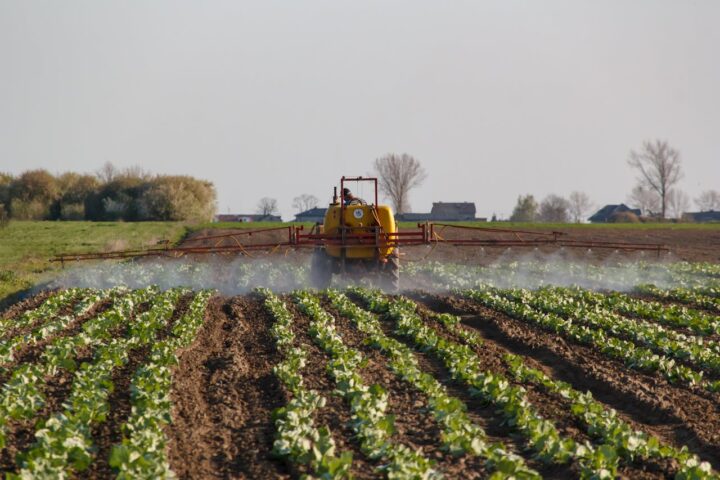As various issues regarding water usage and conservation take center stage in the southwestern states of the U.S., the monopoly of Imperial Valley over the Colorado River is more vulnerable than ever. In a report by ProPublica and the Desert Sun elaborate the disproportionate water consumption by twenty influential farming families along the Colorado River in Imperial Valley, California. These families control the primary water source, enjoying the benefits of over 300 billion litres annually.
The saga began in the early 1900s when the California Development Co. secured unlimited water usage rights. Imperial County saw a seismic shift as certain landowners, in collusion with U.S. Bureau of Reclamation officers, amassed extensive land holdings, defying limits imposed by the Reclamation Act, which restricted land possession to a maximum of 160 acres. The river’s reservoirs cratered last year, with Lake Mead falling to its lowest level since it was filled in 1937. Presently, these landowners command thousands of acres, sustained by water from the Colorado. “Everybody wants it, and there’s not enough of it,” said Anne Schechinger, who researches farm subsidies for the Environmental Working Group. “They’re not valuing the water for what it’s worth,” she adds.
Water Usage by Location
Each acre-foot is equivalent to 326,000 gallons of water.
These farming families mentioned in ProPublica’s report used about 1 in every 7 drops that flowed through the Lower Basin of the Colorado River in 2022, or about 387 billion gallons. This monopoly has roots in Imperial County’s reliance on historical water laws. These laws, discriminatory towards farmers of color, continue to favor specific families, including the Elmores and Strahms, who are interrelated through marriage. They exploit a century-old water law to secure vast land and water resources, while most use the bulk of their water growing hay to feed livestock. The Imperial County farmers produced almost half a billion dollars’ worth of hay in 2022.
Similar Posts
California’s geographical and climatic conditions exacerbate the issue, with the southwestern U.S. prone to drought and water scarcity. The disproportionate water retention by these families not only exposes fellow farmers but also subjects the region’s general population to desert-like conditions. Lawsuits against smaller farmers further cement this monopoly, leading to the displacement of hundreds and granting more land access to the powerful families. Sixteen of the top Imperial Valley families mostly use their water to grow hay, accounting for an estimated 685,000 acre-feet a year.
Despite these families supporting the local farming industry and contributing to the nation’s food supply, federal authorities are taking notice. Due to persistent water shortages in neighboring states, Imperial Valley is now subject to federal laws. Politicians, water managers, and concerned authorities urge the Imperial Irrigation District (IID) to make cuts beyond the allotted 250,000 acre-feet. The district charges growers only $20 for an acre-foot of water.
The same report by ProPublica also mentions Professor Benny J Andres’s concerns regarding the issue. In a book “Power and Control in the Imperial Valley” (2014), Professor Andres of the University of North Carolina pens the evolution of irrigated farming in the county. He poses a serious question regarding the widespread poverty and health issues existent there. Taking a historical approach, he questions the discriminatory practices and exploitative water laws bringing to light the plight of workers and surrounding areas.

Local farmers on the other hand argue that the situation is not entirely bleak. Without Colorado’s water, Imperial Valley would revert to a desert. This water sustains the valley’s agricultural output and generates substantial employment opportunities. The Elmore ranches, for instance, provide employment for locals and other workers. The Imperial Irrigation District now takes 500,000 acre-feet of water less than its legal share from the river each year.
Recent years have seen a shift in the exploitative dynamics, driven by forces from surrounding areas. Farmers now recognize the urgency of preserving water sources like the Colorado. Efforts in Las Vegas, focusing on drip-irrigation plants and trees, have saved over 11.4 billion gallons annually. Additionally, California, Arizona, and Nevada have collaborated on water conservation efforts, proposing significant reductions in water usage from the Colorado and its tributaries. ProPublica and The Desert Sun estimate that without water-saving measures, the Abattis would have used another 30,000 acre-feet of water in 2022.
At the heart of Imperial County’s water dilemma, a battle wages between tradition and progress. The exploitative practices of the twenty families are increasingly questioned as neighbouring regions champion conservation efforts. As the nation grapples with agriculture, water scarcity, and economic interests, the Imperial Valley remains a focal point in the ongoing struggle for a sustainable future.


















